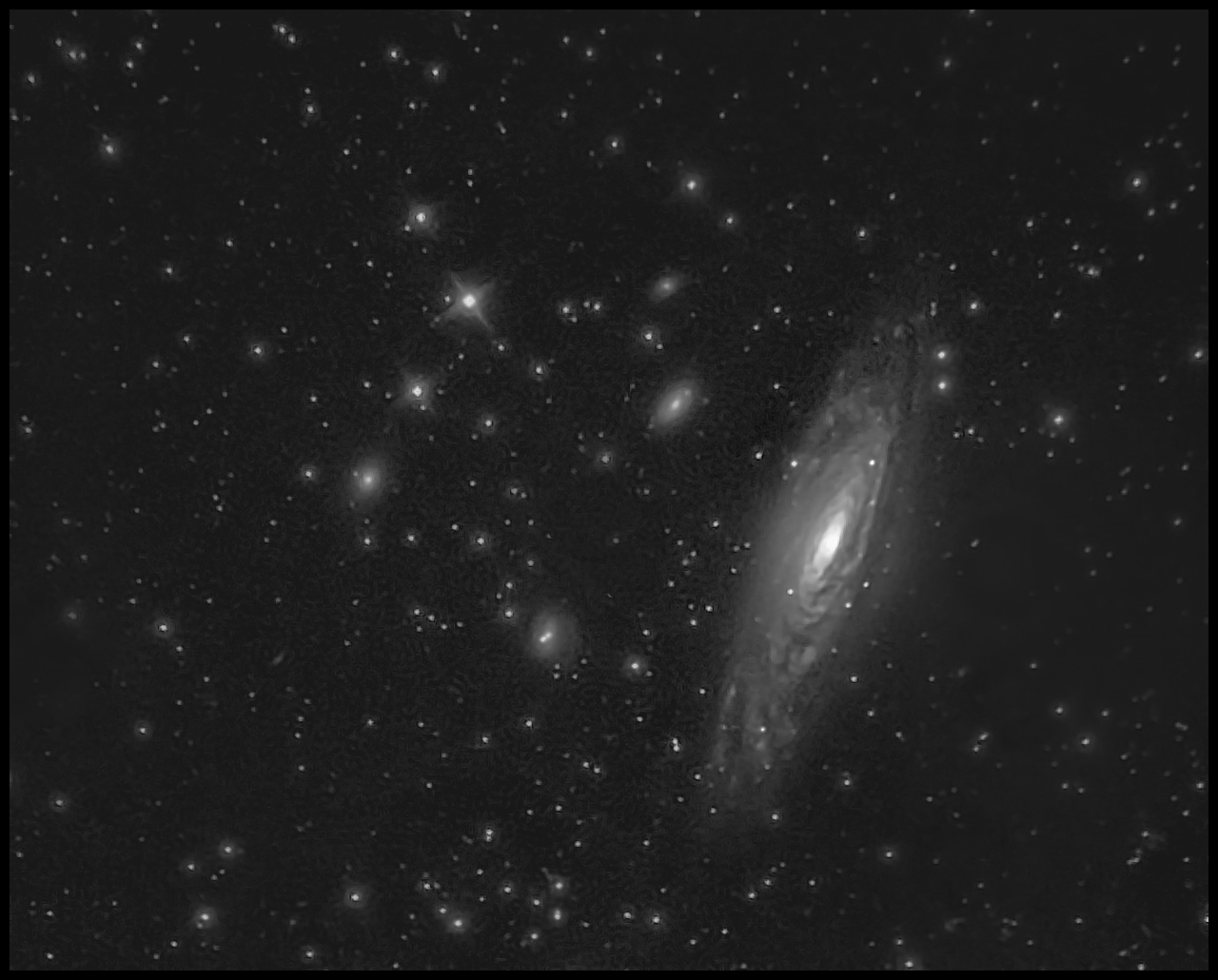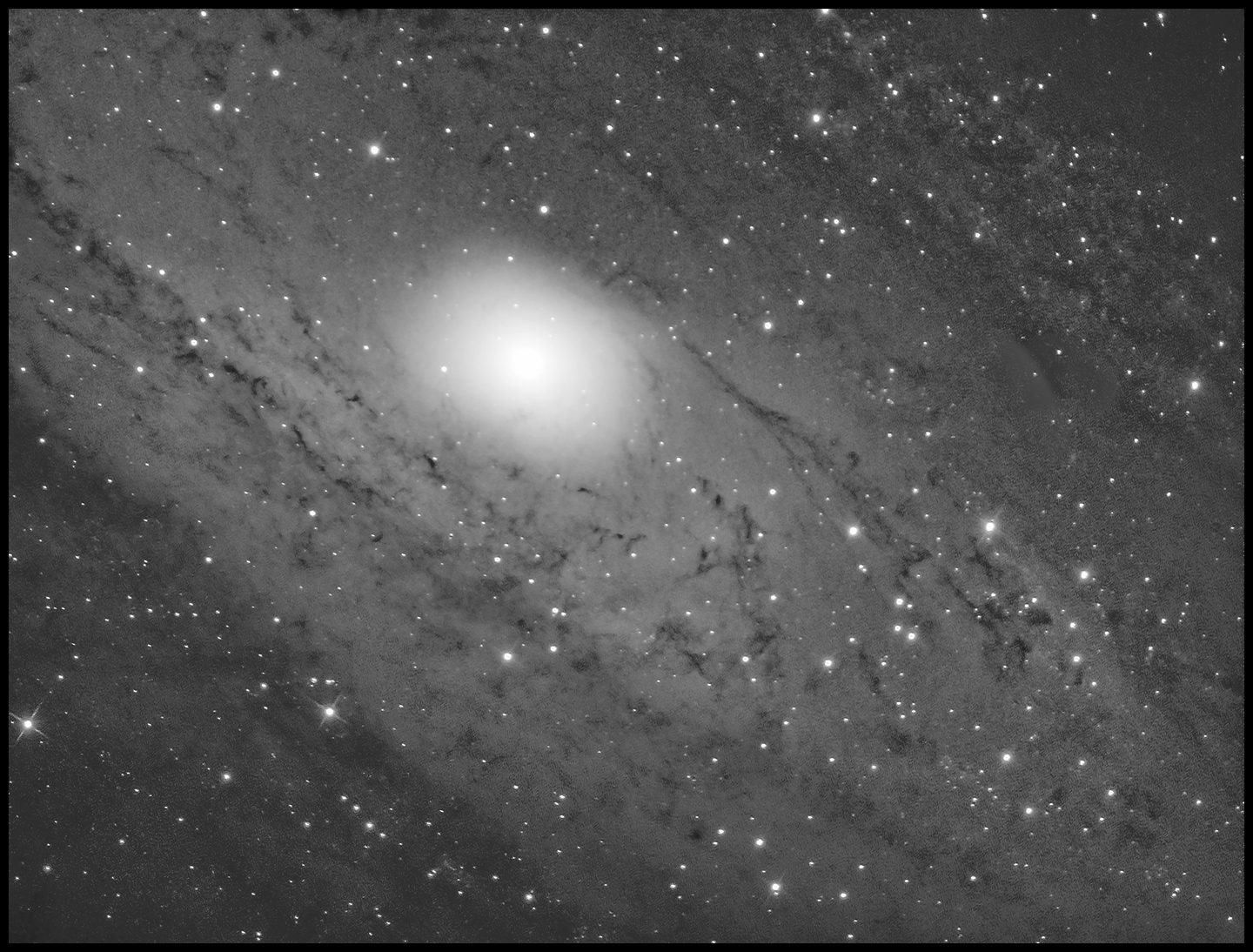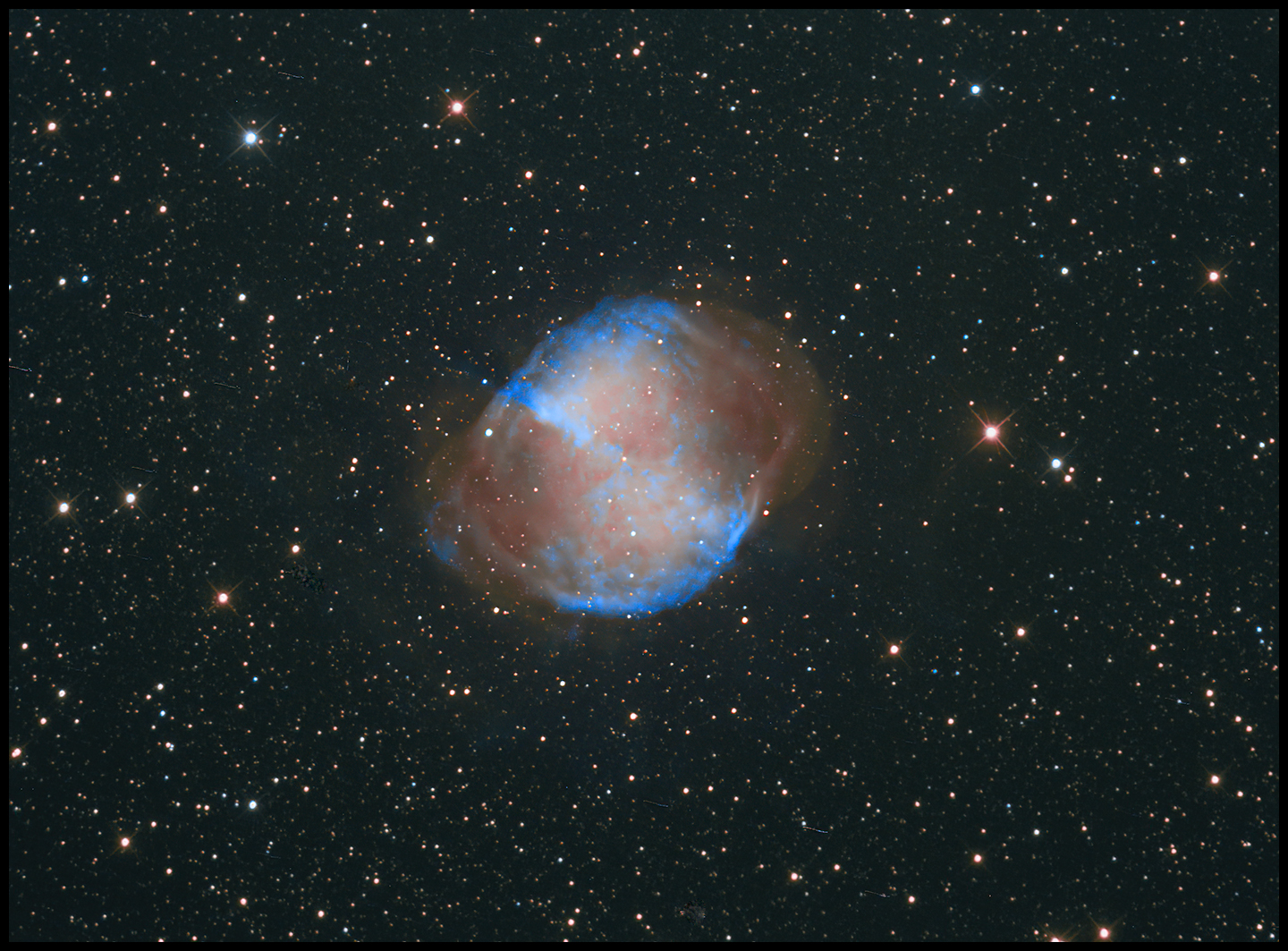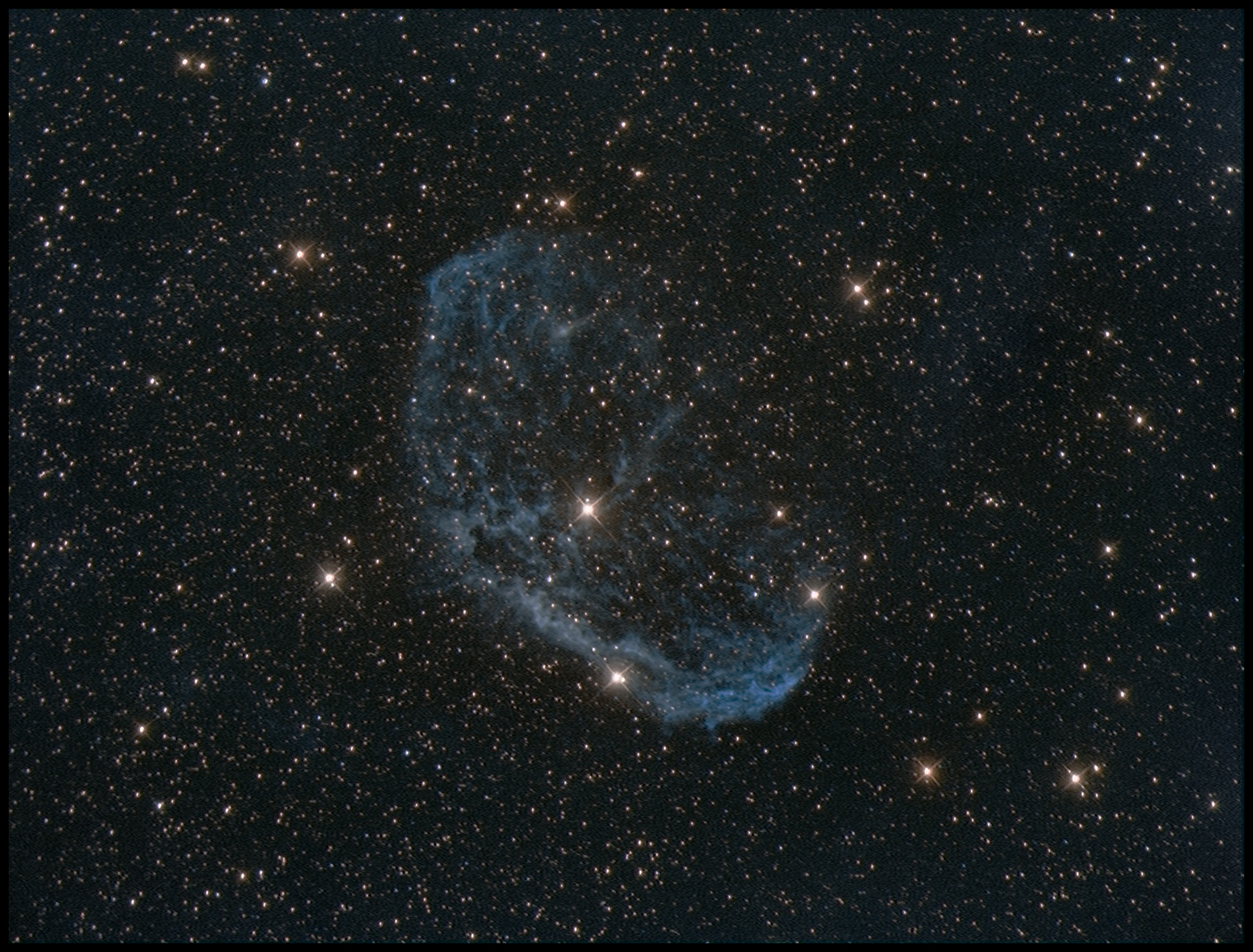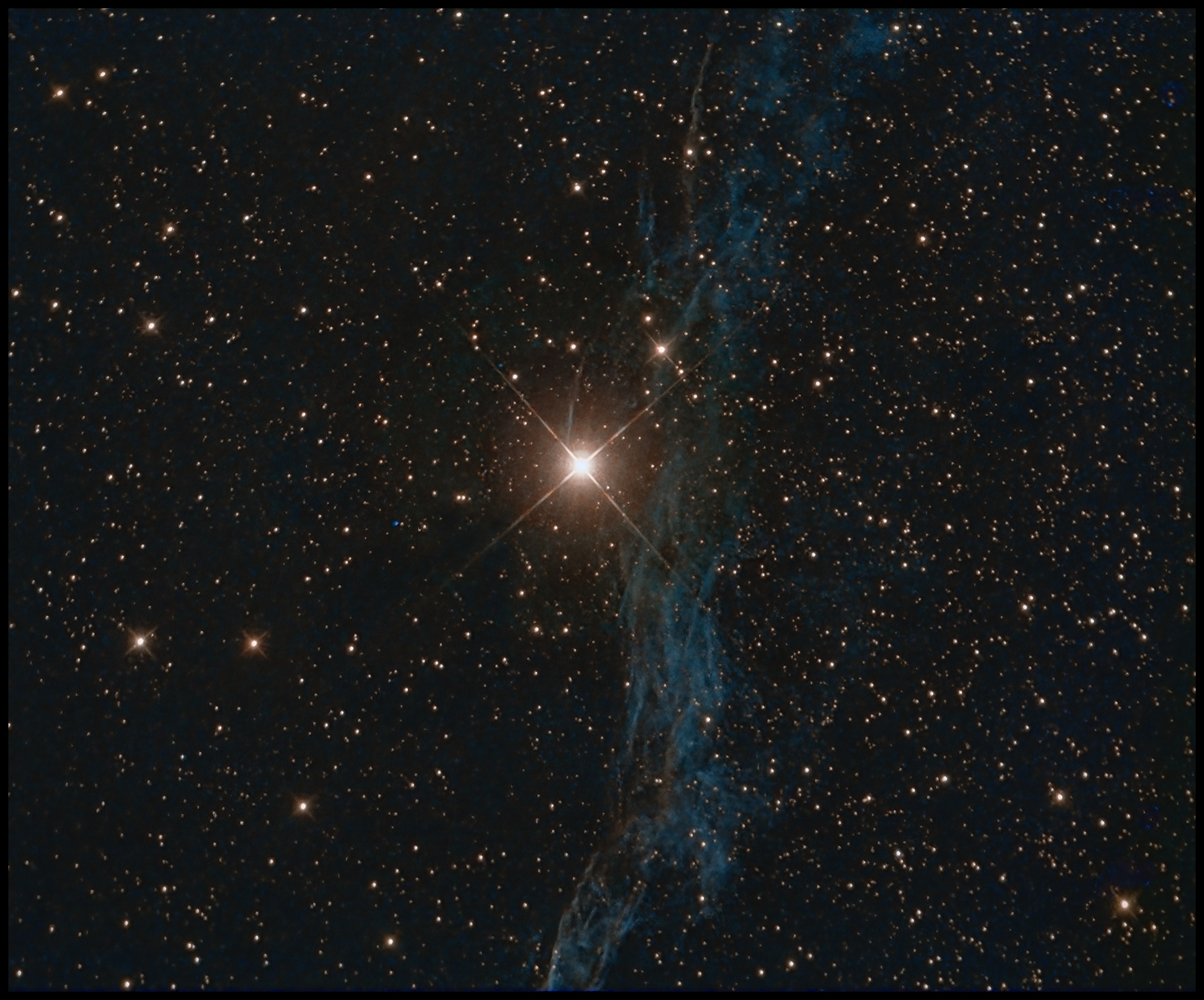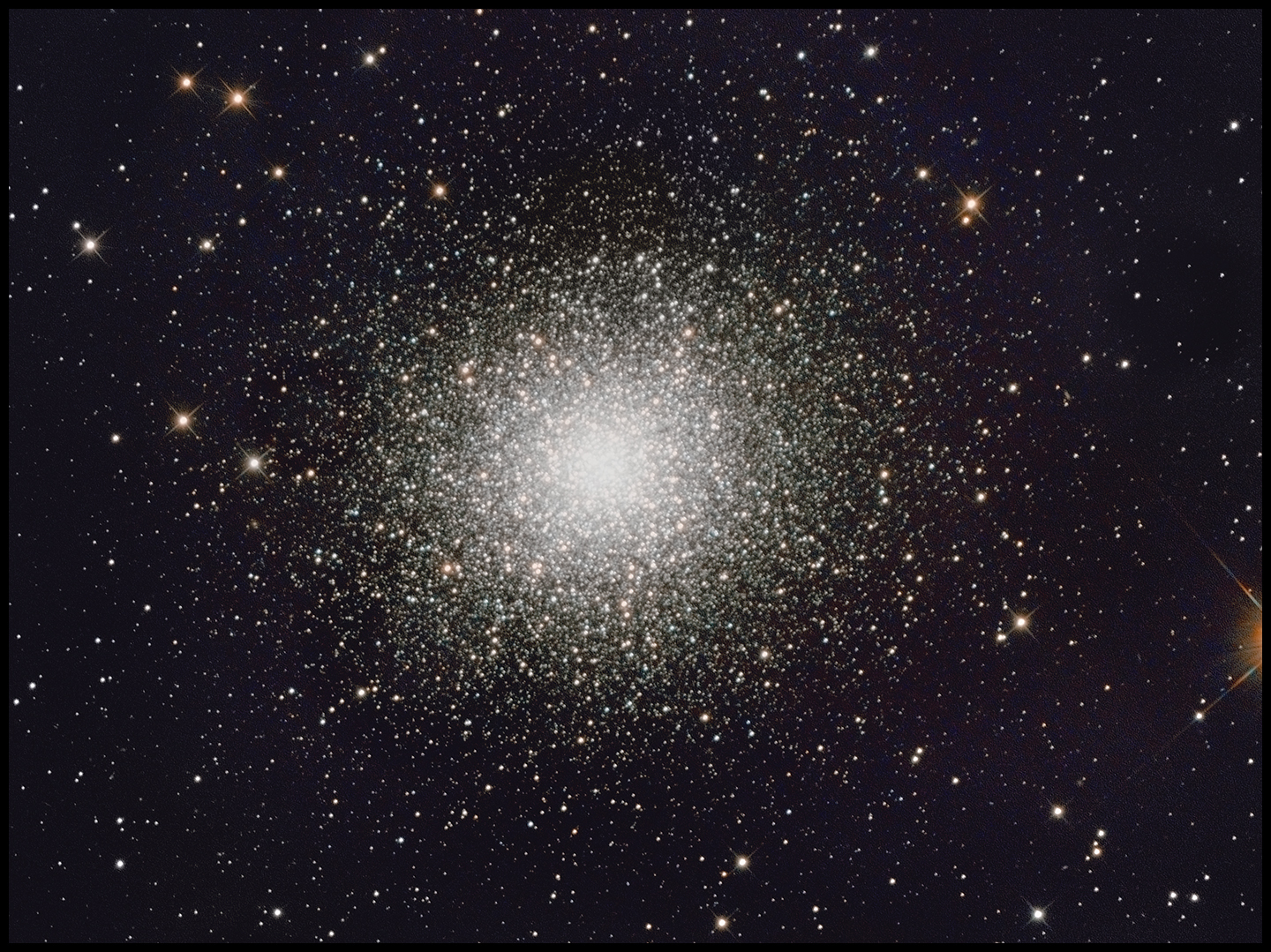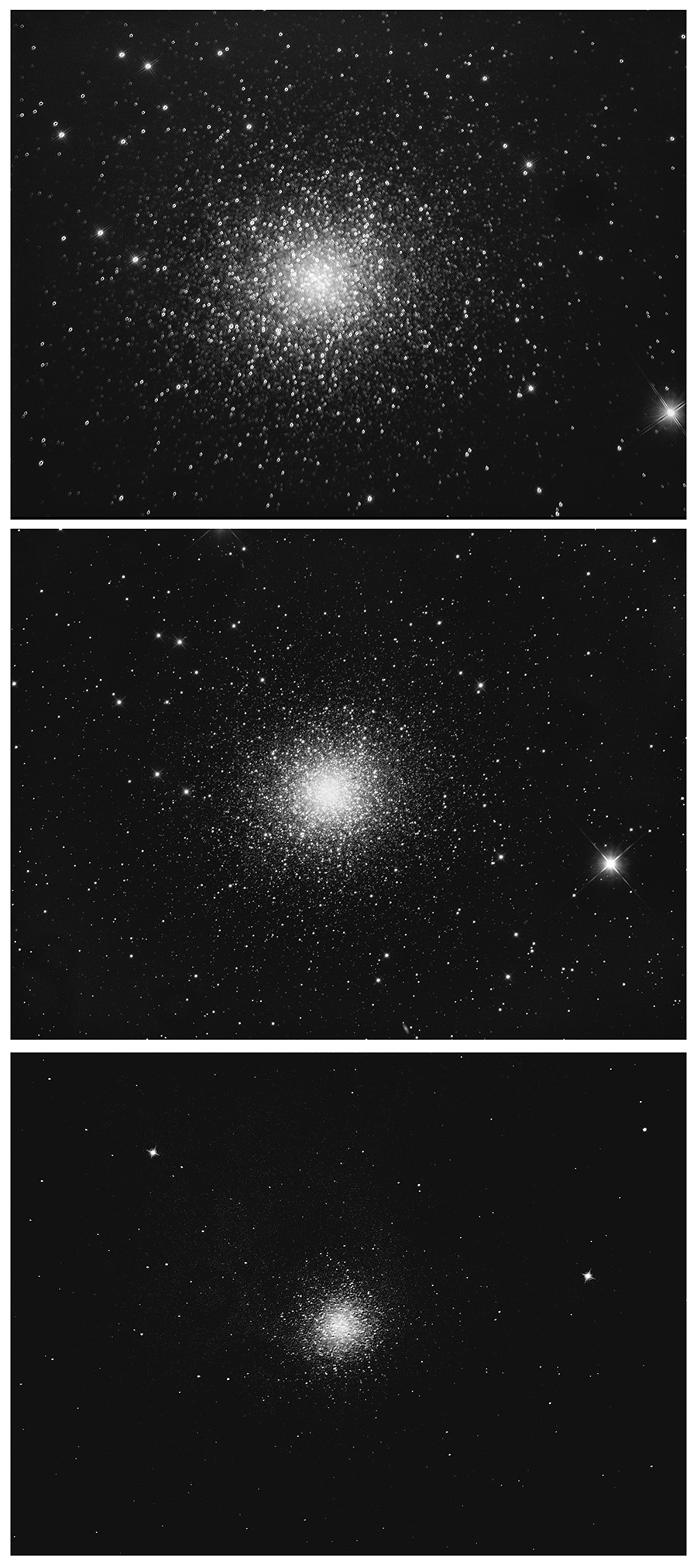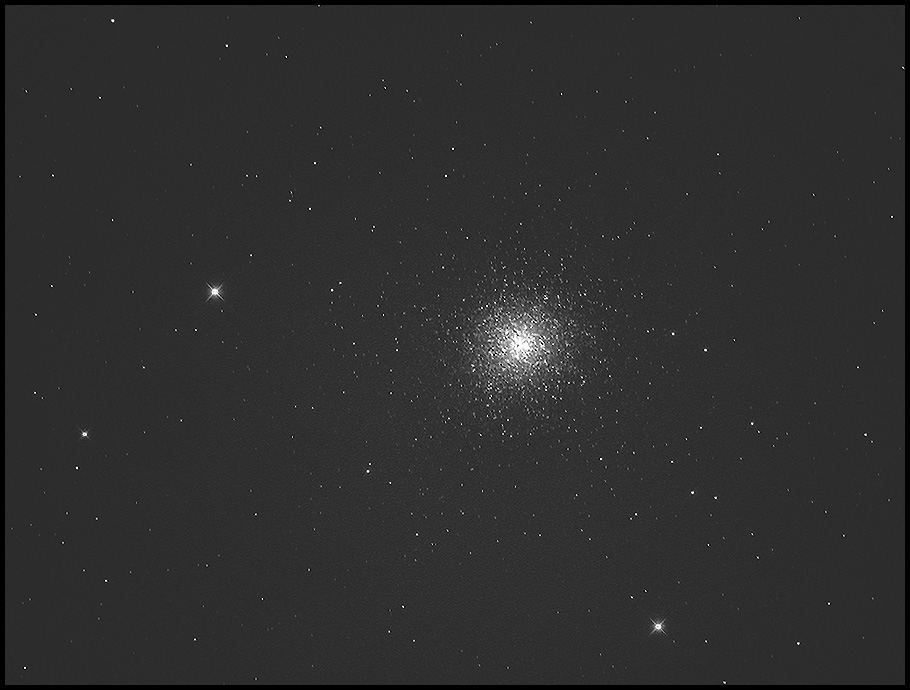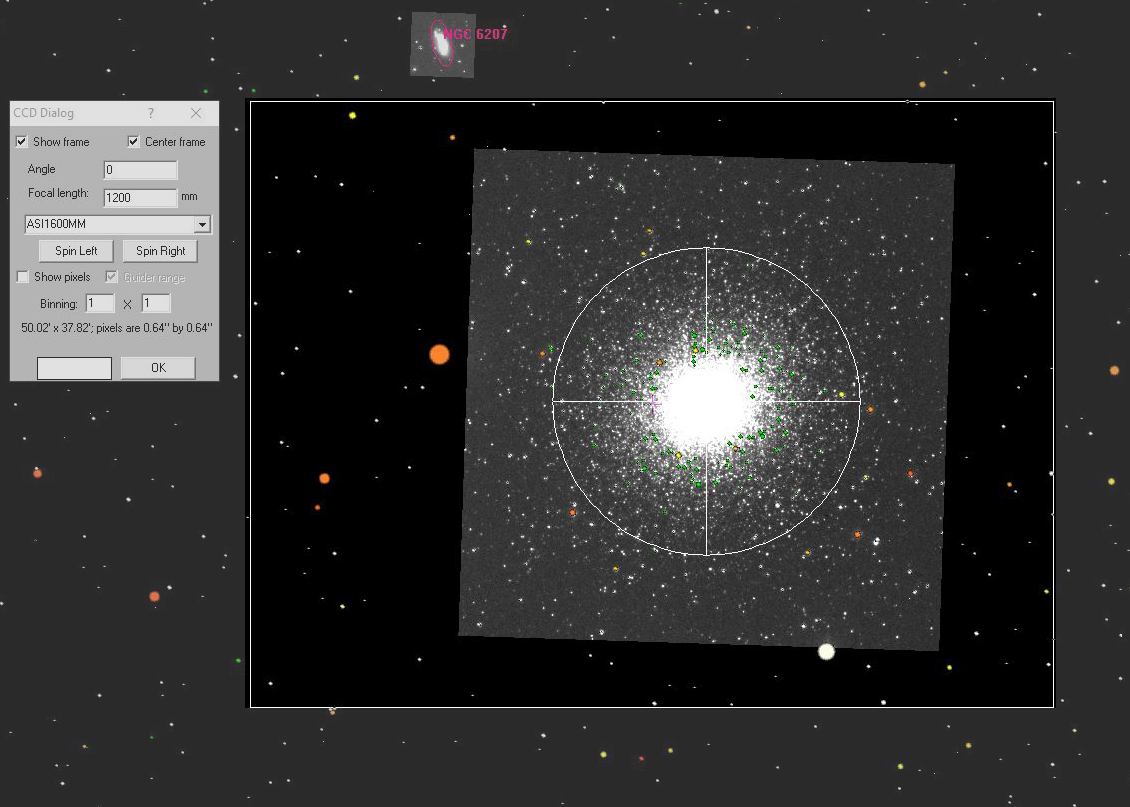The Starry Night, 229 :: home :: |
The Real Camera
The camera with its Canon EOS adapter on the filter wheel and a 2-inch nose-piece in place comes to focus behind the AT10RC at its native FL with the FT3.5 extended about 60mm. Here are two images from the beginning of a new era. I missed the focus in the NGC 7331 / Deerlick Group photo or the focus drifted some (probably the former) thus the horrific star shapes in that one; a deep photo of M13 was particularly flawed and will not be making its appearance here (though it does sneak into the comparison of available focal lengths down the page a ways). I refocused prior to the M31 photo, and it shows. Everything is -15C, 180s, medium gain (139), because keeping as many details constant as is practical simplifies the workflow by no small amount. It took me an embarassingly long time to figure that out.
Click on any photo on this page to view a bigger version.
7x180s
Except for M13 (1h 27m) and M27 (one hour), I used insanely short exposures (18 minutes, 21 minutes, etc) and missed the focus on all but the M31 photo above. More and better to come. For a planetary lark, I put the ASI462MC into the TeleVue 2-inch 2x Barlow and the Barlow into an 80mm Blue Fireball extension; the sensor comes to focus with the focuser extended to about 25mm. Jupiter (49 arc seconds) was roughly 380 pixels across (0.13"/pixel). The effective focal length is about 4600mm (F18). It's a promising configuration, but the photos are not worth showing off since the only imaging I managed was several seconds in the gap between pine boughs. The pine filter does not help planetary imaging. For a good time, try reversing those two pieces and see if the camera reaches focus, or just try the 5x and hang on.
09/01/2022. With the AP67 CCD compressor on a short nosepiece (the camera end of the compressor is ~31mm from the faceplate of the filterwheel), things come into focus out near or just beyond the outermost position of the focuser at an EFL of 1,500mm (or about F6). Ease the snout out 10-15mm to get the extra extension. Sounds awkward, but that's good: when I find the right extension tube(s), there's a good bit of in-travel available to get significantly more compression. In the twilight and early dark, I shot forty 180-second -15C medium-gain darks. And then revisited and visited several targets with the CCD compressor in place. Last night's efforts yielded valuable experience and at least one commandment:
These images are two-color images with a synthetic green channel. Some are O-iii and H-a, others R and B. All subs are 180s, gain 139, with a master dark made from 20 darks. The modest compression gave the 10-inch Ritchey an EFL of 1500mm.
09/02/2022. A second commandment has been revealed:
I tried to take 180s high-gain darks in evening light (capped and wrapped), but they are not dark. Some other time. I found and tried out additional spacers between the sensor and the AP67CCD compressor. It reaches focus still with room to spare. I'll document all the tubes and measurements by and by so I don't need to rediscover it every deepsky season. Clouds moved in and I could see no stars, none. So what? The telescope could still find stars and targets and the digital camera can average its way through amazingly thick overcast. Native FL: 1989mm F8 Here's what that looks like at the sensor. These have not been cropped in any significant way (and they clearly aren't processed for beauty). Pay little to no attention to the apparent size of the cluster -- that varies with exposure and atmospheric clarity -- look at the individual foreground stars for a decent sense of the different scales. There's considerably more in-travel remaining. The camera backfocus is 6.5mm; the filter wheel adds 20mm; the snout is 31mm. "Extension" is the distance from the back of the AP67CCD to the sensor including the snout. The bold-faced numbers below are measured from the sky side of the filter wheel to the back of the compressor. That is the only variable I can control. 1500mm F6.0 :: 6.5+20+31 = 57.5mm extension :: 70mm focus pos See below: there's a mechanical reason this can't be pushed quite this far. For every increase of extension, the focus position comes in by about 10% more. I've got 37mm of in-travel to work / play / mess with, so the maximum additonal extension I can use is 37/1.1 = 34mm. Extension rings are readily available in fixed lengths, including 20, 25, and 30mm. 30mm would leave me only 4mm for error, while 25mm gives me 9mm of leeway. Squinting and being as pessimistic as possible, I think the addition of another 30mm would allow the camera to focus with at least 2mm to spare. I've bet on the error bars and have committed commerce with Agena. If 30mm is too much, I can remove one of the two spacers now in place for the F5.3 configuration and still get some benefit, but if my measurements are correct, I'll have the fastest, widest Ritchey on my block, around 1200mm and on the fast side of F4.9. Does it matter much compared to F5.3? Very rarely, but once configured I can stop thinking about it. Historic note: I've set up these very short EFLs once before --ten years ago! -- with the ST2000XM and the stock focuser, and they worked great. Since then, some of the tubes have found permanent homes on field flatteners for the TMB92. I'm also searching for the right 12v relay timer. I need to be able to start a target as it emerges from the meridian pines and not wait up until all hours to power down the mount and Peltier cooler. This has to be a simple device, though the right one seems elusive. I had a cumbersome fix for this some time back, and a Windows shut-down utility, too. Those wheels need reinventing, and it's easier now: there's a Windows command for shutting down the computer on schedule and some nifty freeware to make it easy to invoke even in the dark at 3AM. While 12v timed relays are hard to come by, 110v versions are not. Amazon will be sending a timer to go upstream of the power supply in a few days. There's nought but rain in the forecast. 09/08/2022. Well damn. The thing is, the Feathertouch scale runs from 0 to 65mm. But you can't actually crank it in beyond 7 or 8 or 9. So where I thought I had 37mm of in-travel available, I actually had more like 28. So I could only add 28/1.1 = at most 25mm of additional extension. I found this out while installing the new 30mm extension which, as a simple addition, could not reach focus (not even close). So I removed one of the 15mm extensions for a net gain of 15mm. Will that make much difference? The sky eventually permitted some cloud-streaked, moonlit views. I grabbed some short, unguided exposures of M13 (below) and M92. Color me very pleased! I get just about exactly 1200mm of EFL (just under F4.8) at a focus position of 12-13mm. There's not enough in-travel left to worry about, even for me, obsessive that I may be (of course, if I find that I've tucked away a short extension somewhere, I'll use it).
Here are the EFLs now available behind the 10-inch R-C using the A-P CCD telecompressor: 1500mm F6.0 :: 6.5+20+31 = 57.5mm extension :: 70mm focus pos That will do.
Looking over the last few nights, I'm surprised to see that the R6 does very well when subjects are in its wheelhouse -- the one shot color aspect, wide field, and easy setup all count in its favor. I think the award for best M13 goes to it. The ASI1600MM is clearly the choice for narrowband targets and for those where ultimate dynamic range, small pixels, and sheer sensitivity are key. Choose your tool. (And recall that there is an A-P thread adapter in the filter cabinet for that Feathertouch focuser and an AP27TV stashed with the refractor that might widen the useful field for the R6. That would surely also require a wider snout. All in good time.
:: top ::
|
|||
© 2021, David Cortner
